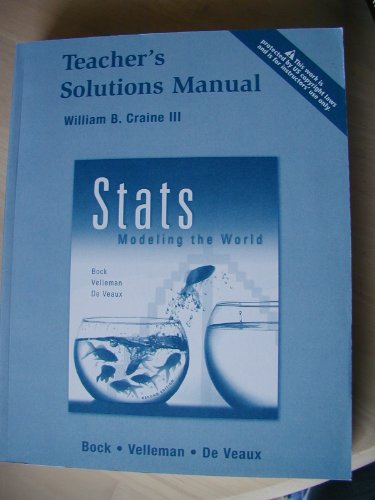

Such as production of crops depends on seasons, the sale of umbrella and raincoats in the rainy season, and the sale of electric fans and A.C. The various seasons or climatic conditions play an important role in seasonal variations. These variations come into play either because of the natural forces or man-made conventions.
#Stats modeling the world ap edition 2nd edition answer key series#
This variation will be present in a time series if the data are recorded hourly, daily, weekly, quarterly, or monthly. They have the same or almost the same pattern during a period of 12 months. These are the rhythmic forces which operate in a regular and periodic manner over a span of less than a year. There are some components in a time series which tend to repeat themselves over a certain period of time. If the set of data cluster more or less round a straight line, then the trend is linear otherwise it is non-linear (Curvilinear). The pattern of the data clustering shows the type of trend.

If we plot the time series values on a graph in accordance with time t. The population, agricultural production, items manufactured, number of births and deaths, number of industry or any factory, number of schools or colleges are some of its example showing some kind of tendencies of movement. But the overall trend must be upward, downward or stable. It is observable that the tendencies may increase, decrease or are stable in different sections of time. It is not always necessary that the increase or decrease is in the same direction throughout the given period of time. A trend is a smooth, general, long-term, average tendency. The trend shows the general tendency of the data to increase or decrease during a long period of time. Seasonal and Cyclic Variations are the periodic changes or short-term fluctuations. The four categories of the components of time series are The various reasons or the forces which affect the values of an observation in a time series are the components of a time series.

Time can be hours, days, months or years.Ī time series depicts the relationship between two variables. Here, time is just a way in which one can relate the entire phenomenon to suitable reference points. It is the chronological arrangement of data. In other words, the arrangement of data in accordance with their time of occurrence is a time series. A set of observations ordered with respect to the successive time periods is a time series. How do people get to know that the price of a commodity has increased over a period of time? They can do so by comparing the prices of the commodity for a set of a time period.


 0 kommentar(er)
0 kommentar(er)
